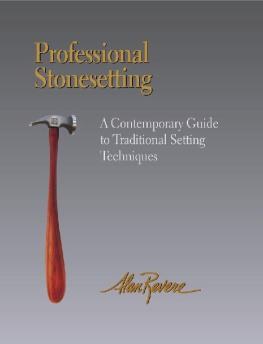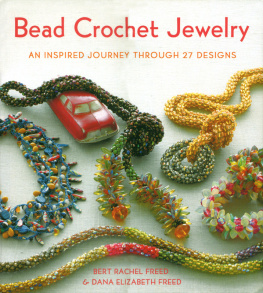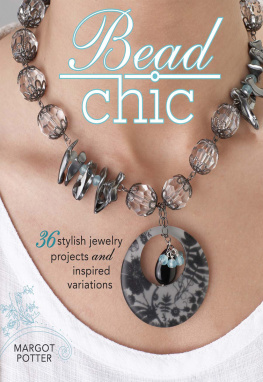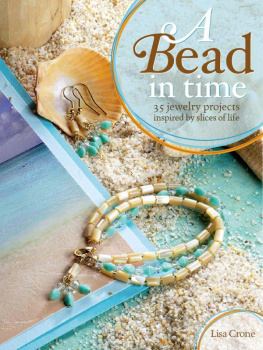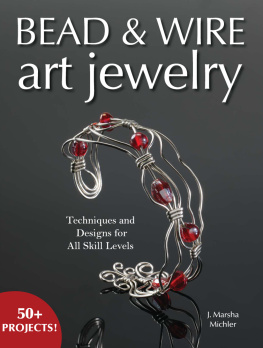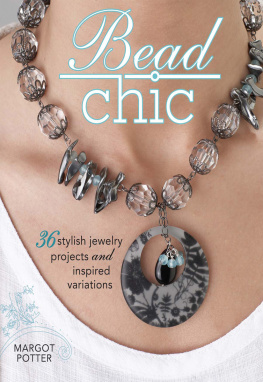


BRYNMORGEN PRESS
318 Bath Road
Brunswick, Maine 04011
2016 by Alan Revere. All rights reserved.
Photography by Christine Dhein
Illustrations by Tim McCreight
Selected photographs of tools by Rio Grande,
used with permission.
Ebook production by booqlab.com
All rights reserved. No part of this book may be reprinted or utilized in any form or by any electronic, mechanical or other means, now known or hereafter invented, including photo-copying, recording, scanning, or by any information storage or retrieval system without permission in writing from the publisher.
WARNING: Some of the traditional procedures described in this book can be harmful if not executed properly. Learn about the hazards of all techniques and materials before using them. Wear protective goggles and use proper safety measures. When in doubt, consult an expert.
This book as well as a complete listing of instructional opportunities for jewelers is available from:

Revere Academy of Jewelry Arts
San Francisco, California
www.revereacademy.com
(415) 391-4179
Introduction
The art of setting precious and semiprecious gems into jewelry has evolved over thousands of years. This book is intended for craftsmen at all levels, from absolute beginners working on their first bezel to those intent on perfecting their prong and bead-setting skills. The projects in this book are demanding, so it is important to remember that patient practice leads to success, confidence and eventually, mastery. Strive for perfection at every point. As in making jewelry, the first step is always the most important, that is, until the second step comes along. Just as the placement of the four corners of a building determines the course of construction that follows, when setting stones, preparation and planning are critical steps. The finished product will never be more accurate than the first step, so get off to a good start. Take measurements, evaluate and think through each step in the process.
Although the ultimate goal is to work both flawlessly and rapidly, novices should concentrate exclusively on the former. The first time an artisan attempts something new, the going is slow. Speed comes with experience over time. Flexibility and adaptability to new situations develop along with skill and confidence. At every point, look for areas that need a little more attention. There is always some way to improve your work. Do not stop until you are convinced that you have done the best job possible, even if it takes longer than you expected. In the end, the results will be worth the effort.
This volume is a companion to my book Professional Jewelry Making and focuses strictly on stonesetting. The setting projects in this book represent traditional, classic stone settings, which for the most part are available commercially.The techniques used can be applied to more contemporary artistic jewelry as well. Each project begins where the bench jeweler / goldsmiths job leaves off, with a polished ring or pendant ready to receive a stone. In most of the projects shown here I have chosen to start with a commercially available mounting. This makes it possible for readers to start from exactly the same place and move through the projects in tandem with me. The source and specific item numbers for ordering these settings are presented at the end of the book.
Contents
Getting Started
Bezels & Prongs
Preparing Gravers: Preparation & Practice
Advanced Settings
Preface
As I contemplated writing this book, I did some research to find out what other books were available on the subject. I was stunned to find no books dedicated to traditional stonesetting. One can find books with a chapter on the topic and a few others that offer an artistic approach to setting. But the simple truth is that there has never been a comprehensive professional-level book on this important aspect of the jewelers art.
Upon reflection, there are three good reasons for this. First, there is a long-standing tradition in the jewelry trade to keep secrets. Fear of competition has stifled the transmission of valuable information through the millennia. Second, there are few professional stonesetters who are motivated and adept at teaching, a task that pays less than what they make at the bench. And third, there has not been the technology to capture and transmit the kind of detailed high quality images necessary to convey this challenging information, until now.
When I attended the Fachhochschule fr Gestaltung (College of Design) in Pforzheim, Germany in 1972, I enrolled in a setting class with Professor Karl Zeiss, a masters master on the subject. For two years he taught me to complete a wide range of bezels, prongs and pav-type settings. To add to our challenge, students did not set actual gemstones, but instead set imitations made of glass, a material that is famously difficult to handle because of its fragility. We did not have access to our own flex shaft; there was only one in the studio so all carving and cutting of seats was carried out with a saw, files and gravers.
Upon my return to the United States, I secured my first bench job, which included jewelry fabrication, repair and stonesetting. I was able to put into practice what I had learned in school. Through daily practice, my skills became stronger and my understanding greater.
Over 40 years ago, I began teaching stonesetting to students privately. At that time there were no resources, no books and no classes offered on setting. So I created projects and wrote a step-by-step guide for students to follow. Since then that part-time teaching gig has grown into the Revere Academy of Jewelry Arts. We offer over 100 classes each year with students coming from around the world to learn traditional jewelry making techniques. Our curriculum includes several stonesetting classes that cover about 30 different styles of setting.Over the past four decades I have been able to train thousands of students in the art of securing gemstones in jewelry. So at this point, I know what information to present, how to present it and which common problems to warn about and guide students through. Although there is always a range of techniques, for the purpose of training I have selected the simplest and most straightforward methods, with subsequent tasks often completed using alternate techniques.
A few years ago I was asked to write a series of articles for JCK magazine on stonesetting. Working closely with Christine Dhein, who photographed the series, we were able to document the level of detail that is essential to understand what is really going on. In most settings, the general concept is straightforward and relatively easy to visualize. But the tiny details captured in photos are key. Drawings are okay to convey an idea, but they are no substitute for actual photo documentation. Anyone can draw his or her way out of a stoneset-ting problem, but only after years of actual work will one know and understand the miniscule details and master the precise techniques that lead to professionalism. And thats what makes this book so valuable; the combination of clearly written text, state-of-the-art photos and precise drawings.
This book is intended for beginners, hobbyists, craftspeople, jewelry artists and professional stonesetters. In it you will find information and instruction to guide you through each step of these key setting projects. The book is divided into three sections, starting with a description of tools particular to setting. The second section covers 15 setting projects arranged in ascending complexity, starting with simple bezels and advancing through a variety of prong settings. The third section starts with detailed information on preparing a graver and offers four practice exercises before documenting three classic bead-setting projects. And to cap things off there are two advanced projects on the techniques of channel setting.
Next page
